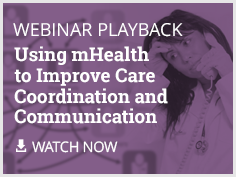John Wooden once said, “Don’t mistake activity for accomplishment.”
The Wizard of Westwood’s quote is relevant to the delivery of healthcare today, be it in hospitals,
clinics, rehabilitation centers, skilled nursing facilities, as well as within the newer model of Patient-Center Medical Homes. The complexity of workflow within and across all of these settings is apparent to anyone who has passed through the U.S. health system or works within it.
The next time you are in a hospital, observe the activity of the providers. A hospitalist stands at a computer, tapping a keyboard [again] to see if a patient’s lab result is available in the EMR. A nurse talks on a phone with the discharge planner, coordinating a patient’s release. Another nurse hovers by another line waiting for an incoming call. A medical assistant writes the day’s goals of care on a patient’s whiteboard. A PA walks down the hall, searching for the floor’s charge nurse. A pair of residents scribble in their notebooks, conducting a hand-off of patients as shifts change.
All of this activity represents the workflow executed by providers to coordinate patient care, delivering the right information to the right people at the right time. All of this activity also represents the hours and minutes taken away from care delivery and quality time spent with patients. A study published in the Permanente Journal in 2012 found that a nurse could spend 20% of their daily work shift coordinating care. If we calculate the time spent by hospital nurses in the U.S. coordinating care, we’re looking upwards of 600,000,000 paid hours annually.
As Coach Wooden relayed, such activity does not mean healthcare providers are necessarily accomplishing anything. All of this activity – of people manually moving information from point A to point B – can be accomplished with 21st-century technology.
We are all told that these “workflows” are how decisions on patient care are made and executed. These activities are well established and behaviors deeply embedded in the culture of healthcare. Yet, doctors, nurses, and other healthcare professionals did not spend their years studying to be couriers or data entry operators.
If we really want to accomplish something in healthcare, then let’s use the mobile technology that’s already in our pockets to move information around and facilitate secure, real-time clinical communication, returning time to those who deserve it the most: our patients.
By using Care Thread’s communication and Care Team Mapping™ tools, providers can regain the hours lost due to inefficient care coordination and do what they trained their entire careers to do – practice medicine that returns people to good health.
Now, that sounds like an accomplishment.





